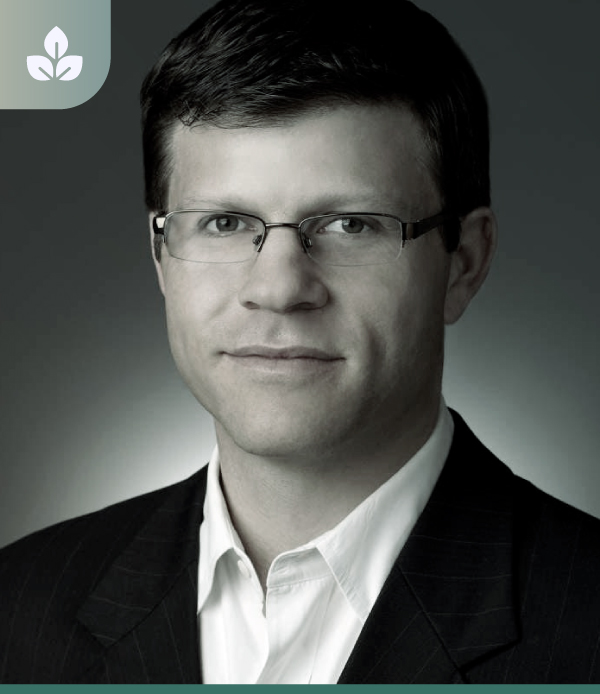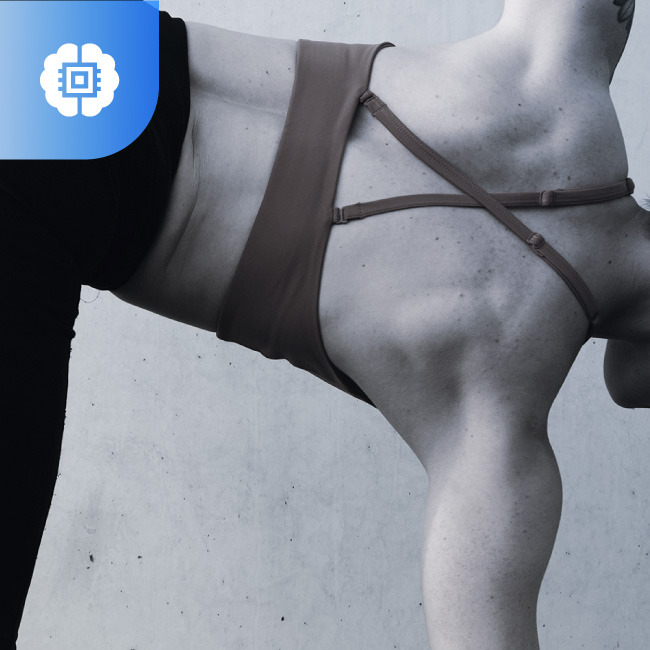
AI For A Circular Future: Inside Trove’s Tech Strategy
About this Podcast:
We’re in an age where retail is constantly evolving – new retail formats, new business models and a new segment of customers.
Andy Ruben is the founder of Trove – a retail company that’s making it easy for brands to buy back and resell their used items. Before he founded Trove seven years ago, Andy was the Vice President of Walmart’s Global eCommerce strategy and was also their first and founding Chief Sustainability Officer. He’s a recipient of the Sam M. Walton Entrepreneur Award, Walmart’s highest annual honour and was recognized as a 40 Under 40 business leader.
Episode Transcript:
Julia Dietmar
Hello and welcome to a new episode of The Retail Podcast by Vue.ai, our podcast series on Leaders in Retail. I'm Julia Dietmar, the chief product officer of Vue.ai and your host for today. Today's guest is Andy Ruben, founder of Trove Recommerce, a retail company that's making it easy for brands to buy back and resell their used items. Before he founded Trove seven years ago, Andy was the vice president of Walmart's global E-commerce strategy, and he was also their first and founding chief sustainability officer. He is also the recipient of the Sam Walton Entrepreneur Award - Walmart's highest annual honour and was recognized as 40 under 40 business leader. Welcome, Andy! It's great to have you on our podcast.
Andy Ruben
Thank you. It's great to be here.
Julia Dietmar
You've spent many years working in retail before you founded Trove. What was the idea behind starting a Re-commerce business? Tell us how the Yerdle journey began.
Andy Ruben
The goal of any retailer is to serve customers. Increasingly, we have so many items in our lives. We're kind of overflowing; it's an abundance of items. And as you know, as customers, you always see the item that we might be buying right now, odds are there's that exact item down the block that someone else has enjoyed and is no longer using. And so I think it's a pretty obvious idea. And, you know, in starting Yerdle, it was so hard for me not to see this exist in the world at a certain point and, I guess at some point became a leap of making that the way things worked.
Julia Dietmar
What's behind the name Yerdle?
Andy Ruben
Yeah. The name Yerdle, we worked on creating a new word for sharing. When we started Yerdle eight years ago, it was originally a peer to peer platform and the word sharing had come to mean where you had dinner last night or your favourite shirt and we wanted more words of sharing to really kind of speak to the community. Being part of a community, having more as part of a community. And so we created Yerdle that was also available with a Website, on Instagram, Twitter, etc. Six letters as a new word for sharing things.
Julia Dietmar
That's cool. So Recommerce and sustainability are the core values - that's Yerdle. Why is it so important in today's retail context? How has Yerdle led by example to not only sell sustainable products but also have an overall sustainable business model?
Andy Ruben
Let's start with sustainability, then we'll come back to the importance for brands and retailers. From a sustainability point of view, this is a global society. We produce a hundred billion items every year for seven billion humans. I'm talking about fashion, luxury and accessory space. That's an insane amount of production. And what has been happening over the last 30 or 40 years is that we tend to buy more items and use them less and we need different models. If we're going to create a better future or even a feasible future, we need better models where we can wear things less. But they don't end up living in our closets. We get to use them, we get to wear them, and then we're able to put them back out in the world. That model is a central part of any future for a retailer or a brand, really a society in terms of just a feasible future. Why it's so important for brands, in addition to sustainability, is that it's a change in how customers shop. And fundamentally, when there's a shift in how we access things, we used to have smaller closets in the past, but now our closets are much larger. They tend to include a lot more fast fashion items. They might include one or two nice pieces. The closet of the future will probably have a few items in it that are being rented. It will have far more pieces than staple pieces, maybe from brands that today we couldn't access but better items, higher quality and closets overall will be a lot smaller again because we'll have access to these items as opposed to needing to have every item in every closet. So as a brand or a retailer that stays relevant to their customer base, brands and retailers have to evolve with this model. And if you are a brand or retailer and not in the resell space, you're simply spending all of your user acquisition or customer dollars for 80 per cent of the market because that 20 per cent of the market has different expectations. So it's just essential, like always, for brands and retailers to stay relevant with macro shifts like this and how we shop.
Julia Dietmar
Interesting. So does it mean that you just talked about rental and Yerdle is a platform that powers used item resale for several brands? Are you planning on also getting into the rental business and being a platform for rentals?
Andy Ruben
Yes. So at the moment, we are focused on resale as opposed to rental. I mean, it's never to say that we wouldn't be in that business, but we do see the space. We do see it all in the same space. We do see both resale and rental as a way to gain more access without the necessity to have long term ownership. Right..where these items just sit in our closets forever. So we are excited by the growth rental. We're excited by the growth and resale and especially the brands we're working with and the progress they're making.
Julia Dietmar
Continuing on the sustainability topic. What happens to used unsold items and how does the process work at Yerdle?
Andy Ruben
One thing that's great about the brands that we work with is especially about getting items back out of closets. We tend to focus on the items that sold really well the first time as opposed to the items that didn't sell well the first time that brands and others are trying to figure out what to do with. These sites that we support our brands in, they're not discount sites of items that nobody wanted in the first place. These are items that people did want in the first place, items that people bought. And this is kind of their next life, their third or fourth goal of it. Right, To allow a family to be outside camping. And so we tend to have very high sales, because when you're talking about this one of a kind pieces. It's a Patagonia jacket from nineteen ninety-two and it's you know, it's been through three owners and when you're on the site looking for that jacket you don't know that there's an infinite time because if you if you're not going to grab up that jacket someone else will. So they tend to be items that sell well the first time. And the sell-through tends to be incredibly high because they're really sought after pieces.
Julia Dietmar
Yeah,that's absolutely true. So customers today definitely have evolved in a way where transparency, trust, awareness are key factors that influence their purchasing decisions. What are your thoughts on this and how do you see purchasing decisions further evolving?
Andy Ruben
Yeah, there's absolutely a trend, especially with and it's really a welcome trend with Millennials and Gen Z about aligning with values. Right. Value alignment with the brands that they support. I think that there's a lot of talks and I think that there's some action, but I think increasingly. As you know, with more transparency, there's an expectation that companies can't just, you know, can't just put up a box that takes items back without really thought about where those items go next. And the expectation with more transparency and more awareness goes beyond just a marketing slogan and a banner to really being able to take back items and have a plan to get the next use out of those items. I don't think it's going to be enough. In fact, I think it's even a liability to simply take back items for people that are ultimately burned and buried anyway. I think eventually millennials and Gen Z will see through that. And people really respect brands that take action or are willing to stand behind and create bold business innovation where you know Eileen Fisher pieces are bought and worn and enjoyed and brought back and cleaned and then resold and enjoyed and brought back and then cleaned, etc. and that type of model, we think a lot about uses per item, nights per tent, miles per jacket, you think about know engineers inspired per Lego set. It's the idea and these bold models of how much use we can get out of the things we've made because it benefits everybody.
Julia Dietmar
That's pretty cool. And you have been quoted to say that friction gets in the way when buying your stuff, when dealing with so many suppliers how do you ensure consistency and quality is maintained? Is there a way to check that suppliers are following the merchandising guidelines and how do you ensure customers get value for what they purchase and then the customers protect it?
Andy Ruben
The way we think about the model and the way that we support our brand partners like Patagonia, REI, Eileen Fisher, etc, think about the difference between certified pre-owned cars and used car lots. So on a used car lot, if you're looking to buy a used Lexus, you might be able to find that. But if you buy a certified pre-owned Lexus from a Lexus dealer, you know that that car's had a two hundred and some point inspection. You know that if there are any problems, you're gonna be able to bring them back. The shopping experience is easier because the dealer that knows everything about that vehicle still knows about the vehicle from three years ago. So you're going to get fantastic service. And then on the supply side, brands and retailers, just like Lexus and automotive have the most knowledge and most ability to get that supply of these high-quality items. So Lexus dealer, most people, when they're looking for a new car, aren't going to leave their car sitting in their yard. They're going to bring it back to Lexus. And so, you also reduce the friction by being able to bring back an item you're no longer using right to the place you bought it. And in doing so, when you bring back a Patagonia jacket, to a Patagonia store, they hand you a gift card, you can upgrade to what you want now and then you bring it back to a store, gets cleaned and posted on the Patagonia web site and we can buy it with the same ease, just like you can buy a pre-certified Lexus. You know it's going to be in great shape and it's Patagonia. So, you know, if there are any problems, you can bring them back.
Julia Dietmar
That's a really good model, also Patagonia, Eileen Fisher all your partners are basically responsible for authenticating their own items and ensuring quality or resale.
Andy Ruben
So whenever you're buying from a site that we support, partners and that is always the case, so sometimes a brand will do that authentication. Sometimes we do. But it's always sold with the same idea that when you're selling a resale product on a brand site, it better live up or even exceed what you expect from that brand. So when you're buying used gear from REI, you know that it's going to come with the same type of quality and guarantee and backing that you'd find with anything at REI.
Julia Dietmar
Right! Right. The Recommerce business is obviously growing. We've learned we're hearing about it more and more and it's growing whether brands want to be part of it or not. How do we get brands to participate in such a customer-driven economy? And what have been some of the biggest challenges to get brands and customers on board?
Andy Ruben
Yeah. I mean, the customer point you bring up is a fantastic one. Retail and brands, one of the things that are fun about retail and challenging are that retailers have to evolve with customers. And those retailers that don't stay relevant don't evolve with customers, you don't get to survive. Right. We've seen it. I mean, it just repeats itself. And so the one thing we do see in the less strong belief that we have is brands have a right to win in this space. So just like the Apple take-back program with phones. When Apple started taking back phones and reselling their iPhones, you know, a lot of us who were buying the iPhone 10 just handed in iPhone 8's. And a brand like Apple has a right to win compared to an eBay or third party marketplace where, you know, you're standing at the Apple store because you're buying your new phone and bringing back your old one. And so brands have a right to win. The risk is that because this is a customer space, a brand's got to own this model. So that brand that you would know, there are a lot of third party marketplaces out there that are making use of this customer-driven trend. I think reality has done a fantastic job with luxury. Right. Rent the runway has done such a good job with the rental market. And, you know, there are many of them. And the risk as a brand is that if you are not providing those same things, in other words if your customers are no longer showing up to your store and instead of going straight to the real, real, that's a lost customer. And so I think that it's risky for any brand not to own this part of the customer expectation and to simply partner with The RealReal is simply losing your customer. And we saw the same thing play out for e-commerce in the 90s. It was really easy for a retailer like Target, Borders or Barnes and Noble to say we see commerce shift, it's a lot of work, it's really hard. So why don't we just have a tab on Amazon? And when someone comes to a target and they want to buy something online, we'll just send it to Amazon. And I mean, obviously, that took Target years to recover from. You would say some of the book retailers never recovered. And it's just a risky proposition when a customer evolves not to own that experience. And for our company, for Yerdle as a white label player, our goal is to provide brands, all the logistics, technology and program management support that bring the capabilities but allow a brand to still do this within the brand. In that way, they keep their customers and they evolve with the customer without investing, you know, tens and hundreds of millions of dollars in new operational infrastructure.
Julia Dietmar
So you're saying that just as in the 90s, brands were supposed to be paying very close attention to their digital strategy. Now they're supposed to be paying very close attention to their resale strategy.
Andy Ruben
100 percent. A brand or a retailer that is not just like in the 90s is doing so at their own risk. And I think that's always the case. And once a brand and or a retailer decides this is of strategic importance to them, just like in the 90s with e-commerce, there's another decision in terms of how to do it. And I think that at that point, once a brand is decided, this is really important to them. That's a point that we'd love to then join that conversation with them based on the knowledge we have and the brands we work with. That's for you to really help. But a brand that doesn't see the strategic nature of the space, we can provide materials that show it. But I think it's that first step. And I think increasingly what we're finding is that brands and retailers. This is on their radar. They are aware of the shifts in the way customers shop and are really asking the next question, which is how do we address this? Now.
Julia Dietmar
You're partnering now with brands like Patagonia, Eileen Fisher, REI, Taylor Stitch and Arcteryx, I'm sure I'm pronouncing that correctly to launch their used product online storefronts which are powered by yerdle. And of course, they really show your partner's commitment in a circular economy. Talk a little bit about how a typical partnership model works. Are more brands receptive to partners in such a way?
Andy Ruben
Yeah, absolutely. So if you take any of those brands, all the brands that you mentioned are Arcteryx, Patagonia, Eileen Fisher, REI and Taylor Stitch. Those are all brands that have live take-back and resale programs and we support those brands and others that are to be launched. And so the way, you know, I mean, again, more brands who are seeing this are looking at this model of getting operational and technical support, but doing it just like these brands we're talking about doing it inside the brand. That is the question of what challenges exist. I mean, the things I think that you'd like to change, just like e-commerce in the 90s. One, I think the first challenge is just realizing the significance of a customer ship like this and the challenges beyond there. There's another challenge that we often see that says, will this be worthy of my brand? And I think sometimes people have the wrong idea of the space and they think about it like less than. 20 years ago when you bought a used item, it was because you couldn't afford the new item. Whereas millennials and Gen Z's will buy a pre-owned item because it's got history and heritage and some narrative and it's more interesting. I think that it's the next step is can brands be worried about what this will do to the brand? And anyone worried about that spends some time on Patagonia or Taylor Stitch, see how these brands are not just keeping a high bar with how they do resale, but actually elevating the brand itself. Arcteryx is a great example. Their program for use is called rock solid used gear, Rock solid for anyone who's like, I am a big fan of Arcteryx gear. Rock-solid is actually the original name of the company. And so brands that really do this well and own it don't just find that they can maintain a high level of branding. They actually use this as a way to elevate the brand. The next. And then an additional place that brands are concerned at the get-go and then find out not to be true is of course there's a risk of cannibalization. Is a risk that if you as a brand are selling new items next to the used items isn't everyone's going to go buy the used item and all of the data that we have right now across hundreds of thousands of items in the last year. None of our brand partners has found that to be the case. We've actually found exactly the opposite, that there's a customer that's actually looking for used. And if the brand is not offering and it just means that the customer is not shopping at that brand. And there's a customer that's looking for something new. And just because you offer the used item next to the new. There is very little cannibalization. That cannibalization, albeit small, is dwarfed by the increase of traffic and the ability to attract a whole new customer to your offering. And that's what we've seen time and time again. And so I really believe that the cannibalization question is much more a fear of something different than anything that we've really seen play out with the data.
Julia Dietmar
So you touched upon luxury clothing and the RealReal business model. Why don't the brands just partner with RealReal to resell their luxury fashion?
Andy Ruben
Yeah, again, I am a big fan of what RealReal does. A third-party marketplace. And some brands actually do a really nice job just to do something. The best option out there was to work at a third-party marketplace. At this point with our options like your Yerdle and other platforms that do the lifting of logistics and technology. I think a brand really takes on a risk by not owning that customer and owning the customer experience. And so a brand that has a long term strategy of working with the third-party marketplace again is a lot like a target deciding to do e-commerce, not as target dot com, but you just outsource that to someone like Amazon. And really the heart of the risk is that these platforms, their interests or primary interest - is rightfully so, is in building their own brand and building their own marketplace. That's what they're brilliant at, but they build that, leveraging the brand names. Their job is not to grow those brands, it is to grow their own brand and grow their own user base. And so whenever you partner with someone who's got misaligned interests to your own, I think it's a risky proposition. And this one's risky just in terms of owning your customer. And that is essential.
Julia Dietmar
And of course, then the big benefit of partnering with somebody like Yerdle is you figured out all of their logistics and how to accept items. Can you talk a little bit about what your platform actually offers?
Andy Ruben
So one of the core differences when we're talking about any of these platforms, I suggest just reselling items in general. They're not. You never have ten thousand units in four sizes or five sizes and four colours. You're dealing with one item. And even if you have two of the same item, one might have a pilling on the lower left sleeve and one might have, you know, a small patch here. So every item is one of one. And when you have a lot of snowflakes that you're dealing with, it means that you know, to work with that in a scalable way, you need a set of capabilities, both technology as well as operations to address those one of a kind items. I can give you some examples of the first time that we saw a Patagonia item come back that originally had a hood, but the hood was detachable. When the item comes back into a store, maybe the customer never wore it with the hood. Maybe they got it from someone else. They never got the hood. But you know you wouldn't know to look for that. And then when we match it with its metadata, it's posted online. It looks like it has a hood. And that's a disappointing experience when it shows up used and doesn't have that. So you've got a concept called tips where every time you know, we learn something like a detachable hood on a Patagonia. We then look for every partner item that has anything detachable. So it could be an Eileen Fisher belt. And immediately in our system, whenever we see one of those items for any brand partner, that item gets flagged in our checking process to check for that item. And then the Eileen Fisher piece that originally had a detachable belt and still doesn't sell might be of great value, but we should let the customer know. And so there are and I think at this point we've got 20 some thousand different tips. So there's just a whole set of infrastructure from photography to check in to fulfilment that brands need to be famous for focusing on customers and the branding in their innovation. They don't need to be famous for one of a kind logistics. And so the way we see it is to let us build those operational capabilities across many partners so that the brand can do this in their brand in the way that it makes sense for them. And they can focus on that and we can focus on tips.
Julia Dietmar
Yeah, that's absolutely right. Well, thank you so much Andy for being part of our podcast. Really appreciate your time.
Andy Ruben
Awesome, Julia. Thank you. And I look forward to talking to you soon.
Julia Dietmar
We are in the age where retail is constantly evolving. New retail formats, new business models and new segments of customers aren't just constantly coming to get their monthly dose of retail fashion. Tune into The Retail Podcast by Vue.ai. Until then, goodbye.
Meet your speakers:

Andy Ruben
Founder & CEO, Trove

Julia Dietmar
CPO, Vue.ai





